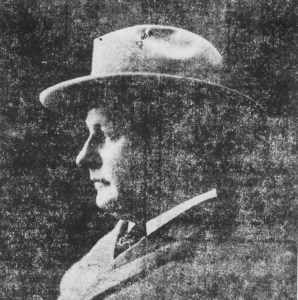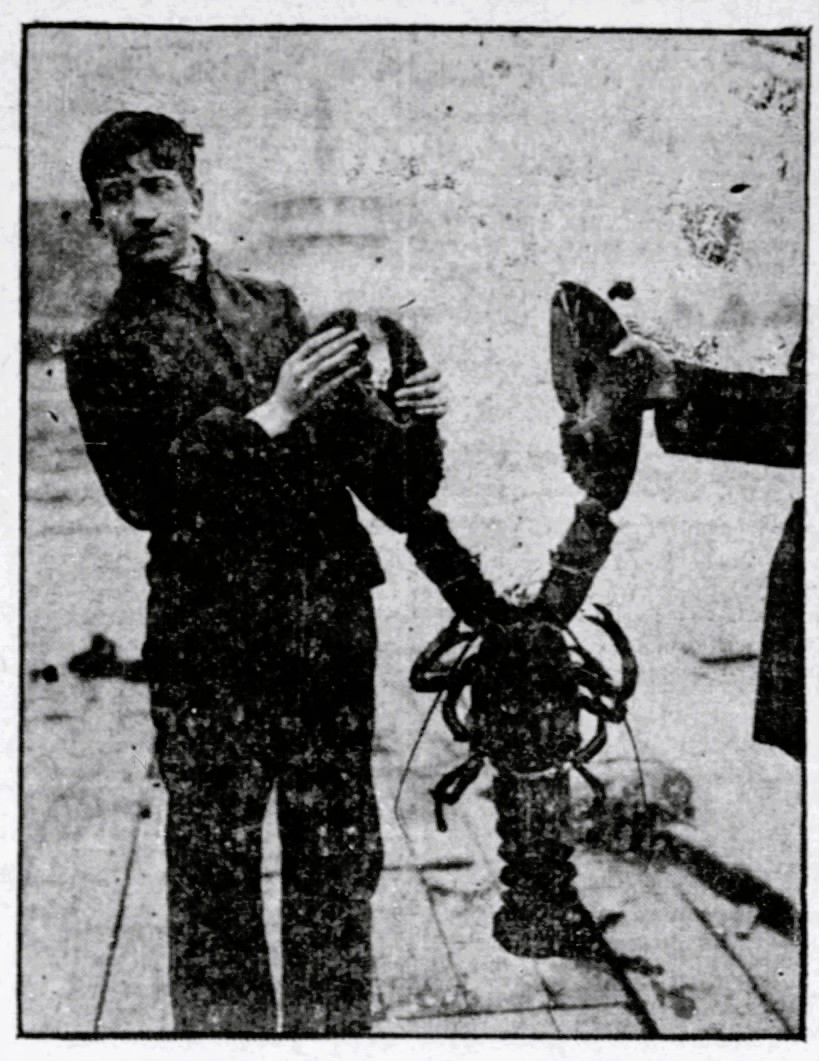
The Lewiston Evening Journal — the oldest of the Sun Journal’s predecessors — once ran a story about a lobster so large that it tried to tear apart a heavy, wooden dory.
Though it seems scarcely believable that a lobster half the size of a man could have existed, the story’s writer, 39-year-old Henry Balch Ingram, was an esteemed journalist whose work appeared in scores of publications across the country.
Ingram wrote about everything from a new water system in Havana, Cuba, to a farmer who raised skunks in rural New York.

He once detailed the life of a rag picker in New York City whom he tagged the Queen of the Dumps, telling readers that along with her huge piles of garbage she also had perhaps $50,000 socked away that she refused to spend.
Though Ingram clearly had a penchant for the offbeat, his tales ring true.
Except maybe for that giant lobster.
In Ingram’s telling, “some fishermen” at a Portland pier provided him with a detailed account of their experience with the huge crustacean off the coast of Newfoundland.
Elmer Staples, one of the men, said that on a sunny September day in 1895 he was fishing in a dory and the cod were biting.
A hundred yards away, two other men – Nova Scotians Tom Massey of Pictou and a fellow named Reed from Antigonish – were doing the same, Staples said.
Staples said he heard a yell and looked over at the other boat in time to see it “lurch as if someone was climbing over the side.”
He said he saw Massey hanging on for dear life while Reed was swinging an oar at “a great, green slimy-looking thing that was waving his long feelers above his head.”
“At first, we shouted that a devil fish had attacked the men in the boat, but at that moment a long swell brought us near” and “we saw that the object was a huge lobster which was hanging over the side of the boat” with Massey’s right arm held fast “in one of its horrid claws,” Staples said.
Massey, he said, “was screaming for dear life, and was hanging on” with his left hand while the creature tried to seize him further, the witness said.
He said he expected to see Massey “go over the side and be dragged down into the depths by the monster that held him in its grasp.”
Reed kept trying to smack the creature with the oar, Staples said.

The lobster let go of Massey briefly to try to snatch Reed, Staples said, but missing a swipe, it “took a fresh hold on Massey in a fresh place on his arm.”
“His screams of agony and fear were frightful to hear, and we gave him up for lost,” Staples said.
Fortunately, in Staples’ account, another dory had pulled near and someone in it smacked the creature on its head with a heavy hatchet.
That caused the lobster to let go of Massey and turn to attack the newcomers, Staples said.
“Fully three feet in length,” Staples said, it seized the side of the boat with its pincer “and broke it out like paper.”
Meanwhile, Reed seized a pike axe “and gave it a terrible jab in the back of the neck” that caused the creature to let go, Staples said.
“It sank out of sight before a harpoon could be struck into it,” he added.
Staples said the wounded man’s wrist had been snapped by the creature and “the flesh and muscles” on his arm were “terribly lacerated up as far as the elbow.”
The men involved rowed back to the mother ship and tended to Massey’s wounds.
In the aftermath, Staples said Reed provided details of the creature’s appearance while they were hauling in a steady catch of cod.

As they hauled one especially large cod aboard, he said, “the horrid apparition of this monster” suddenly appeared, according to Staples.
Reed said that he and Massey “recoiled in horror as it waved its long tentacles in their faces and turned its green eyes, which seemed to be set in the end of long tubes, at them,” Staples said.
“They both screamed that it was the devil,” Staples said.
Reed said the creature “seemed enraged and tried to climb into the dory” and quickly had Massey’s arm “in the jaws of its left claw.”
That’s when “the battle for life began in dead earnest,” Reed told Staples.
The Guinness World Records says the heaviest lobster ever recorded was an American one caught off Nova Scotia in 1977. It weighed 44 pounds and was likely a little over two feet long.
There are tales from natives and colonial-era settlers of even larger lobsters, but evidence for their existence is thin.
For example, Adriaen Van der Donck’s 1656 book “Description of the New Netherlands” mentioned that “lobsters are plenty in many places” off the coast of New York. “Some of those are very large, being from five to six feet in length,” he wrote.
Staples said he thought the one he saw attack his shipmates was “three or four feet long” — puny compared to the Dutch writer’s claims, but far beyond the size of the lobster tanks at Hannaford supermarkets.
In any case, Staples was shaken by whatever he saw.
“I hope if I go to sea until I am as old as Methuselah that I may never see or experience the like again,” Staples told Ingram.

We invite you to add your comments. We encourage a thoughtful exchange of ideas and information on this website. By joining the conversation, you are agreeing to our commenting policy and terms of use. More information is found on our FAQs. You can modify your screen name here.
Comments are managed by our staff during regular business hours Monday through Friday as well as limited hours on Saturday and Sunday. Comments held for moderation outside of those hours may take longer to approve.
Join the Conversation
Please sign into your Sun Journal account to participate in conversations below. If you do not have an account, you can register or subscribe. Questions? Please see our FAQs.